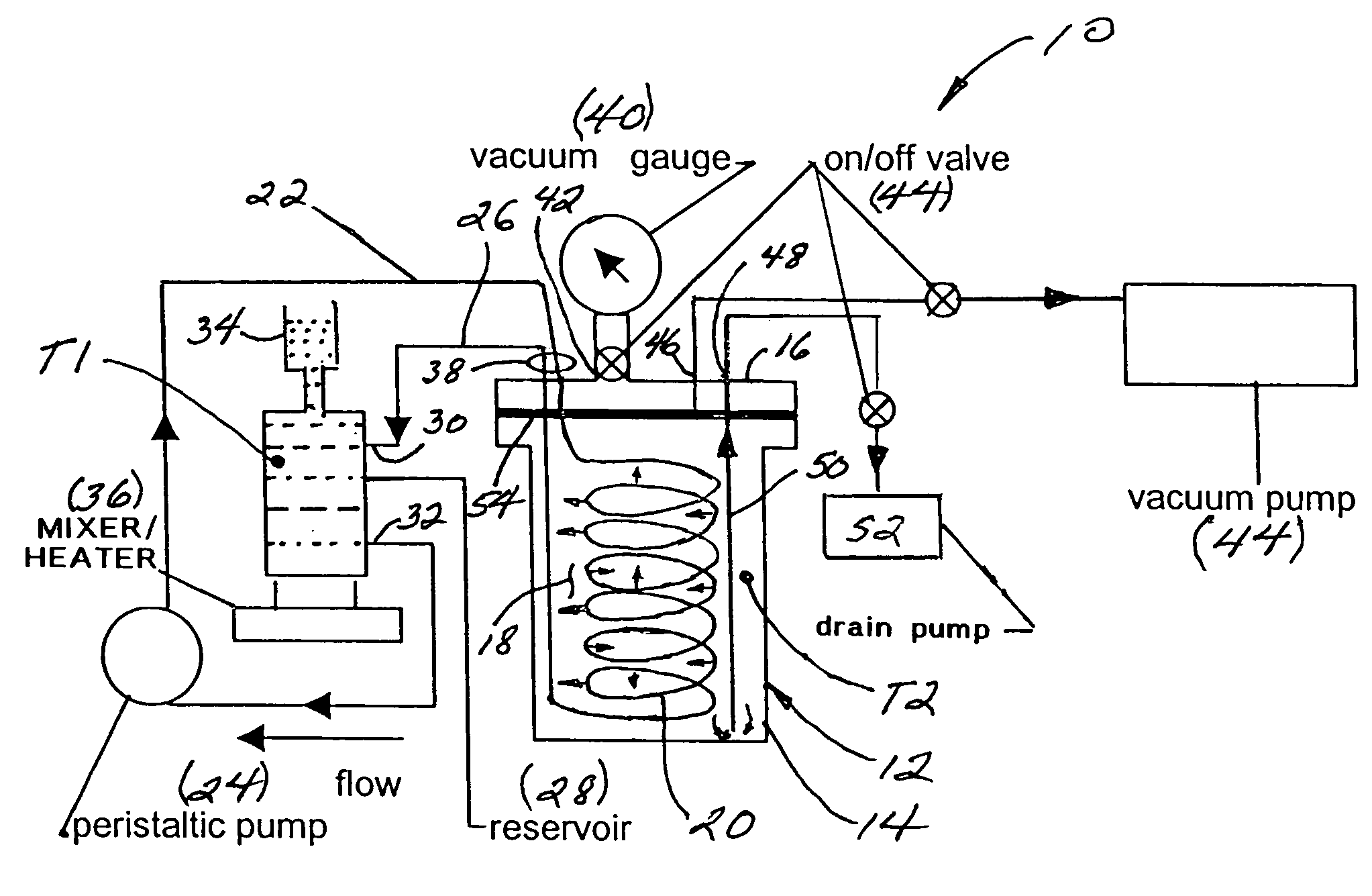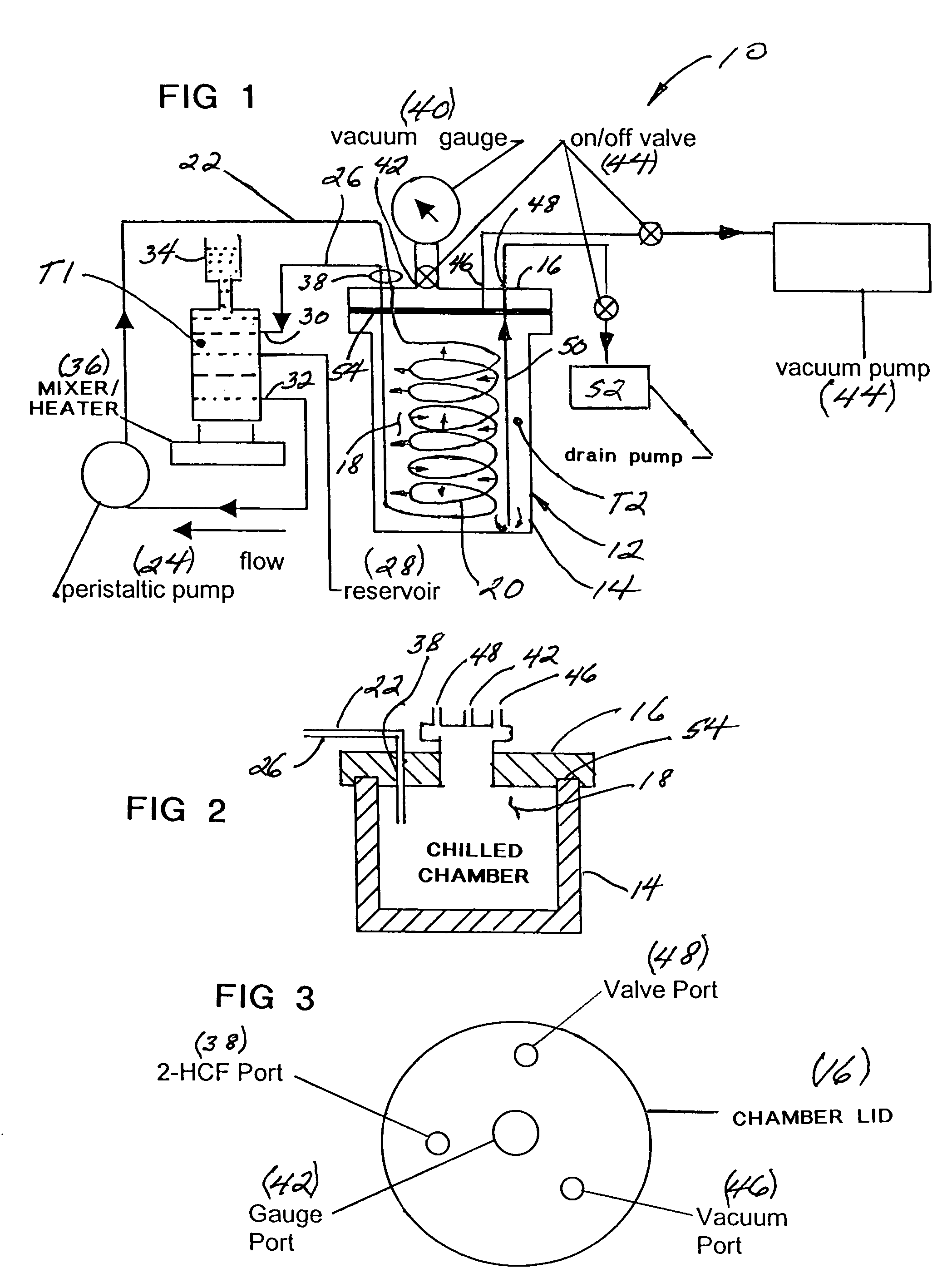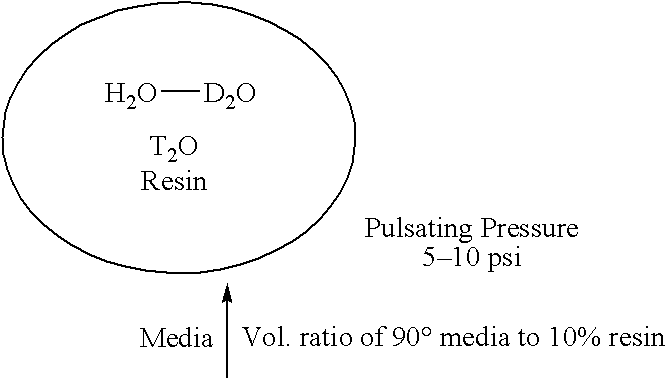System and method for separating heavy isotopes of hydrogen oxide from water
a technology of hydrogen oxide and heavy isotopes, which is applied in the direction of water/sewage treatment by ion exchange, chemical/physical processes, nuclear engineering, etc., can solve the problems of storing contaminated water in concrete at a considerable expense and stressing the environmen
- Summary
- Abstract
- Description
- Claims
- Application Information
AI Technical Summary
Benefits of technology
Problems solved by technology
Method used
Image
Examples
example 1
[0056]DOD-HOH contaminated water samples having a relative freezing point of 2211 osmolality representing a 0.045% of DOD was mixed with a quantity of substantially pure H2O having a freezing point of 2207. A quantity of divinylbenzene polystyrene sulfonic acid (RSO3H) was mixed with the contaminated water in a volume ratio of 10% resin: 90% contaminated water. The resin had a maximum hydration size of 100μ from the reservoir. A total of 300′ of hollow HCF molecular membrane material having an average 1.0 of 1.3 mm and a wall thickness of 2 mm was loaded into the treatment chamber. The slurry containing the contaminated media and the resin were circulated by the peristaltic pump at a flow rate of 2.0 ml. / min. at a chamber vacuum pressure of approximately 30″ Hg as monitored by the vacuum gauge 40. The interior of the reservoir 28 was measured at T1 to be 60° C.
[0057]The treatment chamber 12 was chilled to condense the H2O vapors which permeated outwardly through the walls of the HCF...
example 2
[0058]Another sample of contaminated water having a relative freezing point of 2217 osmolality representing a 0.045% volume ratio of D2O to H2O was run in a 10% slurry of 200 to 400 mesh resin being 2% cross-linked and in the hydrogen form. The time of slurry recycling was approximately 200 hours at a flow rate of approximately 11 ml / min. After 200 hours of continuous run time, the H2O content of the slurry was decreased while the freezing point of the slurry had increased to 2226 osmolality representing a concentration of D2O in the slurry of 0.50%, up from the initial 0.045%.
[0059]A 5 ml. sample of the slurry was placed on a porous filter component and 1000 psi of pressurized nitrogen was applied to the top of the resin column. Approximately 2 ml. of liquid effluent was squeezed and taken from the resin within the slurry. The removed liquid had a freezing point of 2245 osmolality which indicated that the content of the resin was 0.51% D2O.
PUM
| Property | Measurement | Unit |
|---|---|---|
| pressure | aaaaa | aaaaa |
| total volume | aaaaa | aaaaa |
| total volume | aaaaa | aaaaa |
Abstract
Description
Claims
Application Information
 Login to View More
Login to View More - R&D
- Intellectual Property
- Life Sciences
- Materials
- Tech Scout
- Unparalleled Data Quality
- Higher Quality Content
- 60% Fewer Hallucinations
Browse by: Latest US Patents, China's latest patents, Technical Efficacy Thesaurus, Application Domain, Technology Topic, Popular Technical Reports.
© 2025 PatSnap. All rights reserved.Legal|Privacy policy|Modern Slavery Act Transparency Statement|Sitemap|About US| Contact US: help@patsnap.com



